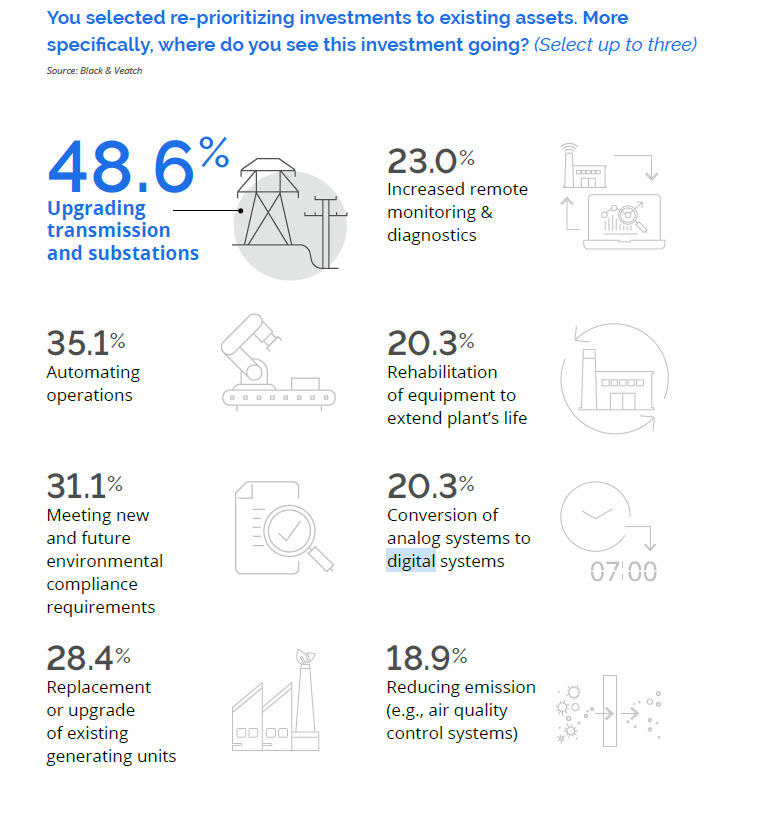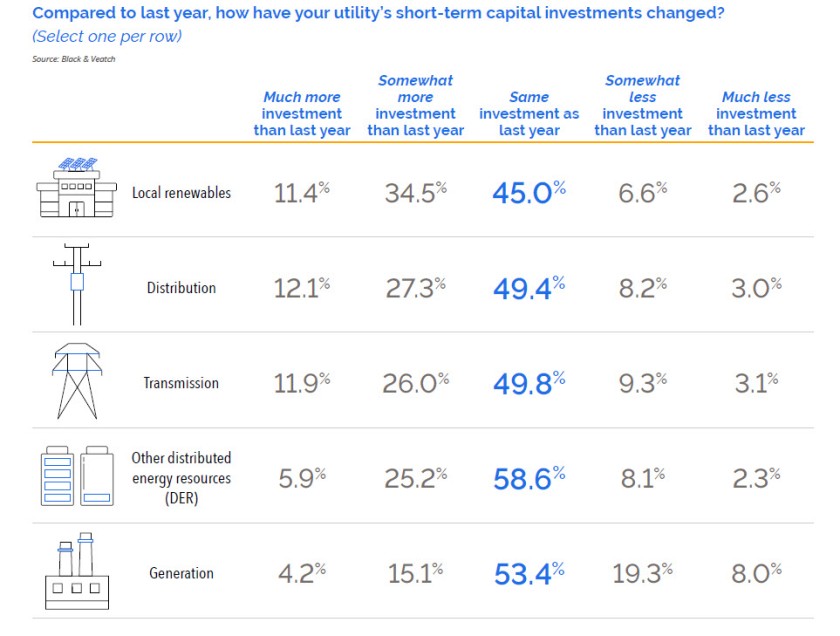
Our landscapes seem never to change, power transmission lines spread out across the land as far as the eye can see delivering our electricity. Nothing seems to change, but nothing actually is as far from the truth.
The electricity industry is waging a sweeping transformation and in a recent report by Black & Veatch providing the present position of the state of Electricity called Strategic Directions: Electric Report, where they have gathered 600 power utility stakeholders to offer the challenges and opportunities that are occurring in the transformation being undertaken.
The challenges and opportunities are all caught up in a constantly shifting, complex ecosystem of everything, from conventional power generation to the renewable energies sources derived from the wind and sun and the significant changes underway in the use of putting in place microgrid systems.
I want to briefly summarize this report, one I would certainly recommend spending time in reading.
I have provided some of Black&Veatch’s figures to provide an opening view of the challenges and opportunities occurring in the electric power industry as a “snapshot” of what are the issues, where the investment is going. The short-term capital being made and the emerging technologies being actively considered, finally what carbon emission reductions or clean energy investments are being considered over the next ten years and beyond ten years.
The most challenging issues facing the electric industry

Hydrogen and Battery Storage are both being actively looked at or phased into the energy systems and will feature far more in the future to offer sustainability, reliability and resiliency as energy providers continue to decarbonize. Hydrogen is presently seen as a “beyond ten-year” investment, but that might significantly change if the technology ramps up in the next few years to provide scale in alternative fuels.
The report also is indicated that growing demand for electric vehicles and prosumers who want to feel empowered, engagements and feeling more in charge of generating and consuming their own energy.
The integration of generation, transmission and distribution assets is finding adaptive ways to keep ageing systems functioning at ever-increasing levels of efficiency, more resilient systems working alongside competing with the increasing shocks of severe weather, a changing climate and increased natural disasters of fire, floods and drought. The current Covid-19 pandemic has only added more complexity and the power loads moving from commercial and industrial sites to residential suburbs has added even more complications.
Where is investment going to support existing assets?

Today it is becoming essential that the whole electricity system has a clear “line-of-sight” so all these variables can be better managed. A digital backbone needs to be rapidly placed in parallel with the physical needs of any power system.
The need for constant innovation practices is demanding radical overhauls of how the electricity system is managed. To achieve reliable, resilient energy supplies needs a transformation that is formidable in its challenges, where each utility facing their own unique solutions.
The shifts occurring in short-term investments

As the power industry responds to changing consumer behaviours, unpredictable load patterns, and increasing use of distributed energy resources (DER) and other customer-driven nuances are transforming technologies.
The focus upon Innovation increasingly is based on digital information and
communication technology, including artificial intelligence, augmented and virtual reality, blockchain technology and robotics.
Those power providers that are slow to respond to these multiple challenges and stick with a business-as-usual approach do so at their own peril, and their customers increasing frustration, increasing the risk of expensive stranded assets and higher consumer electricity prices.
Emerging Technologies becoming part of the integrated operations


The next-generation business and capability models, coupled with the deploying of new technologies ranging from DER to digitalization and
analytics across competitive and regulated markets.
One of the most exciting changes will be creating a digital twin of power plants or electric grids because it informs power system operators with understanding possible responses to certain scenarios and emergency events before they happen. The emergence of the internet of energy is coming upon all in the energy systems. We will have IoT, IIoT and now IoE within our needs to understand and integrate.
As Electricity Systems undergo some radical changes, the pace and dynamics are all adding fresh pressure on utility providers. The way business will be undertaken will rapidly change as the energy portfolio undergoes a dramatic change.
The shifts to meet carbon emissions and clean energy goals being considered.

Black&Veatch produce some excellent reports. This one providing the present position of the state of Electricity called Strategic Directions: Electric Report, where they have gathered 600 power utility stakeholders to offer the challenges and opportunities that are occurring in the transformation being undertaken is no exception. It offers a really good view of the shifts being undertaken in the Electricity Power Market.